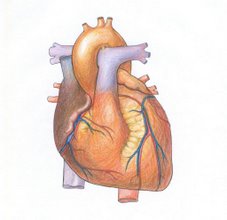 Chikungunya is a relatively rare form of viral fever caused by an alphavirus that is spread by mosquito bites from Aedes aegypti mosquitoes, though recent research by the Pasteur Institute in Paris claims the virus has suffered a mutation that enables it to be transmitted by Aedes albopictus (Tiger mosquito). This was the cause of the plague in the Indian Ocean and a threat to the Mediterranean coast at present, requiring urgent meetings of health officials in the region.
Chikungunya is a relatively rare form of viral fever caused by an alphavirus that is spread by mosquito bites from Aedes aegypti mosquitoes, though recent research by the Pasteur Institute in Paris claims the virus has suffered a mutation that enables it to be transmitted by Aedes albopictus (Tiger mosquito). This was the cause of the plague in the Indian Ocean and a threat to the Mediterranean coast at present, requiring urgent meetings of health officials in the region.Symptoms
The Aedes aegypti mosquitoThe symptoms of Chikungunya include fever which can reach 39°C, (102.2°F) a petechial or maculopapular rash usually involving the limbs and trunk, and arthralgia or arthritis affecting multiple joints which can be debilitating. The symptoms could also include headache, conjunctival injection, and slight photophobia. In the present epidemic in the states of Andhra Pradesh and Tamil Nadu, India, high fever and crippling joint pain are the prevalent complaint. The fever typically lasts for two days and abruptly comes down. However, other symptoms, namely joint pain, intense headache, insomnia and an extreme degree of prostration last for a variable period, usually for about 5 to 7 days.
- Maculopapular rash
- Nasal blotchy erythema
- Freckle-like pigmentation over centro-facial area
- Flagellate pigmentation on face and extremities
- Lichenoid eruption and hyperpigmentation in photodistributed areas
- Multiple aphthous-like ulcers over scrotum, crural areas and axilla.
- Lympoedema in acral distribution (bilateral/unilateral)
- Multiple ecchymotic spots (Children)
- Vesiculobullous lesions (infants)
- Subungual hemorrhage
- Photo Urticaria
- Acral Urticaria
- Cephalgia
- Lumbago
- Coffee Colored Vomiting
- Epistaxis
Histopathologically, pigmentary changes, maculopapular rash, lichenoid rash, aphthous-like ulcers show lymphocytic infiltration around dermal blood vessels (Inamadar et al). Pedal oedema (swelling of legs) is observed in many patients, the cause of which remains obscure as it is not related to any cardiovascular, renal or hepatic abnormalities.
Treatment
There is no specific treatment for Chikungunya. Vaccine trials were carried out in 2000, but funding for the project was discontinued and there is no vaccine currently available. A serological test for Chikungunya is available from the University of Malaya in Kuala Lumpur, Malaysia.
Chloroquine is gaining ground as a possible treatment for the symptoms associated with Chikungunya and as an antiviral agent to combat the Chikungunya virus. According to the University of Malaya, "In unresolved arthritis refractory to aspirin and nonsteroidal anti-inflammatory drugs, chloroquine phosphate (250 mg/day) has given promising results." [2] Research by Italian scientist, Andrea Savarino, and his colleagues in addition a French government press release in March 2006 [3] have added more credence to the claim that chloroquine may be effective in treating Chikungunya. The CDC fact sheet on Chikungunya advises against using Aspirin. Ibuprofen, Naproxen and other non-steroidal anti-inflammatory drugs are recommended for arthritic pain and fever.
Infected persons should limit further exposure to mosquito bites, stay indoors and under a mosquito net. Further, "supportive care with rest is indicated during the acute joint symptoms. Movement and mild exercise tend to improve stiffness and morning arthralgia, but heavy exercise may exacerbate rheumatic symptoms." [4] Arthralgia remains troublesome even after 8 months
Preventive measures
The most effective means of prevention are those that protect against any contact with the disease-carrying mosquitos. These include using insect repellent containing NNDB or DEET or permethrin, wearing long sleeves and trousers (pants), and securing screens on windows and doors. It's also important to empty stagnant water where mosquitoes breed. [7].
It does help eradicting the larvae of mosquitos, by breeding dragonfly .
